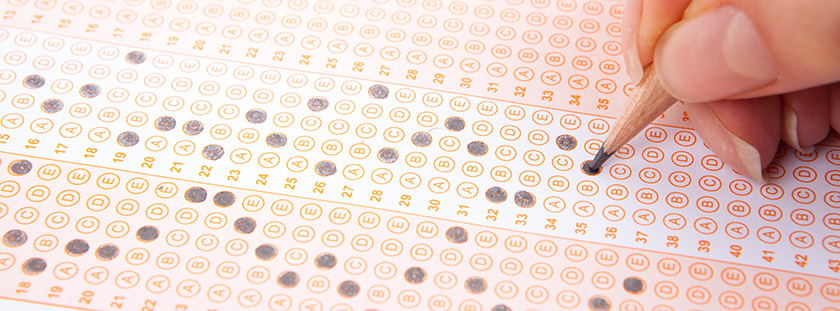Data summit unites BGSU, high school educators
Partnership aims at securing student success

By Bob Cunningham
Even with GPAs and ACT and SAT scores, it can be difficult for school districts to truly know how their students fare in college.
But a new conversation has started at Bowling Green State University.
In response to districts’ requests for data on how their graduates are doing at BGSU, the University invited seven northwest Ohio high schools — Toledo School for the Arts, Perrysburg, Maumee, Springfield, Otsego, Fostoria and Bowling Green — to a data summit in Bowling Green. Data was shared with those partnership schools to demonstrate how students from their schools performed at BGSU. None of the data included any student-identifying information.
“There is a lot of emphasis in K-through-12 education on college and career readiness, but one of the things schools often lack is real data to indicate how successfully their students actually perform as they get to college because they don’t have access to any of it,” said Dr. Dawn Shinew, dean of the College of Education and Human Development.
Shinew said the primary point of the data summit was to give the administrators English and math placement scores, overall GPAs and the majors of their former students so they could see their strengths and weaknesses at BGSU.
“They got the raw data, but we also did some correlations for them around things like high school GPA and placement tests, or we broke it out by race, ethnicity and gender, those kinds of identifying information,” she said. “But we also made sure we were protecting students’ individual data so there was never anything that could be traced back to a particular student.”
Shinew said Dr. Brian Campbell, associate dean for research, technology and assessment, took the lead on compiling the data, working with the Office of Institutional Research.
“This has been the kind of data schools have been asking for for a long time, but there isn’t any kind of clear mechanism for us to report that data back to them,” Shinew said, “so this was an effort to start building a system that would do that on a more regular basis.
“This group was our pilot. The goal will be to expand this out to certainly the schools that tend to be our largest feeder schools in terms of numbers of graduates who come to BGSU.”
From there, it’s a two-way street.
For example, a school might find its students are doing fairly well in high school math classes but they’re coming to BGSU and placing in remedial or lower-level math classes. Shinew said that might indicate there needs to be some curriculum changes at the high school level so that students will be better prepared to come in and be successful in the math sequence.
Likewise, from a University standpoint, if a lot of students come in with high GPAs from a high school with high ACT and SAT scores in math but are doing really poorly on their math placement tests, then “maybe we need to look at our placement tests as well,” Shinew said. “It’s about making sure that those things are lining up.
“It gives school administrators the opportunity to start asking some critical questions about what’s happening to their students: There may be some inconsistencies with the curriculum or some grade inflation if performances aren’t aligned.”
Shinew sees the data summit becoming an annual event as more and more schools seek out this kind of data.
“After this pilot group, we would start building toward larger and larger groups so that we would be one of the few, if not only, universities in the state who are pushing this kind of data back down to the schools so that there’s a better matriculation of students from their high schools to our college.
“That way, when students come here they’re more likely to be successful and morel likely to stay.”
Doug Mead, director of the Toledo School for the Arts (TSA), likes how that sounds.
“For us, it’s interesting to see how our students compare going into college,” said Mead, adding that BGSU is TSA’s official sponsor. “We have anecdotal data that says we have students who are going to enroll in a specific college or programs. What we don’t have is any idea of their actual preparation. Are our students prepared and do they succeed once they are at BGSU?
“Now we can better communicate to parents and to our own students so that they know what to expect when they’re going into the college environment. It’s win-win for everyone.”
Updated: 12/02/2017 12:34AM
